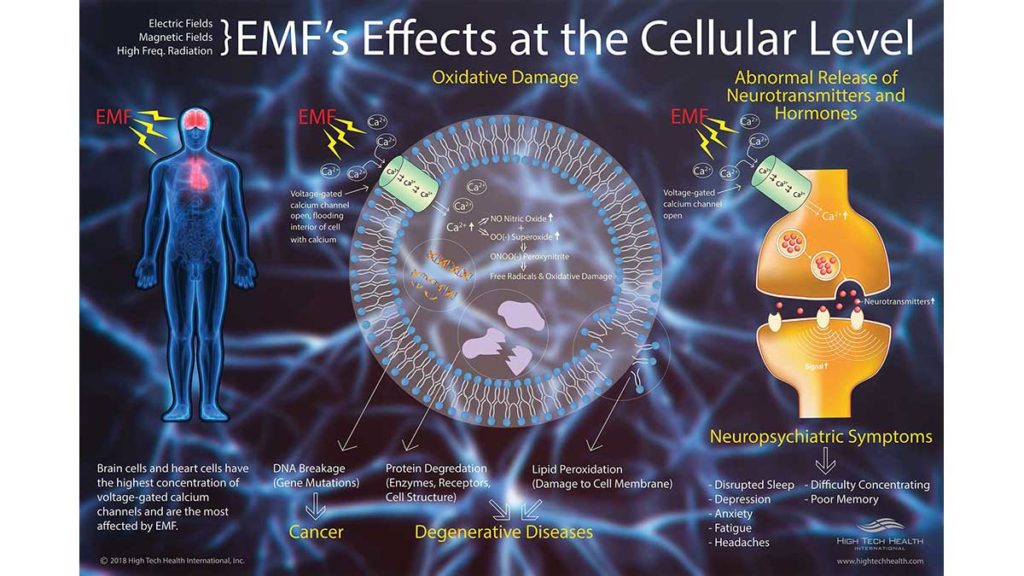
Notable Points:
- The US National Toxicology Program study (2018)[i] and the Ramazzini Cancer Research Institute study (2018)[ii] showed ‘clear evidence’ of cancer from RFR. Currently RFR is classed as a 2B ‘possible’ carcinogen by the WHO. Experts are calling for it to be re-classified as a Class 1 ‘definite’ or ‘probable’ 2A carcinogen based on updated peer reviewed science.
- UK guidelines as advised by PHE are taken from the ICNIRP, a small, private group of scientists who consider only short-term thermal heating effects, whilst disregarding harmful biological effects from low-intensity emissions. The ICNIRP were ruled ‘biased’ by the Court of Appeal of Turin in 2020 [iii] and have been widely accused of having financial conflicts of interest.
- Public Health England updated their guidance in Feb 2020 advising to ‘reduce exposure’ to radio waves from mobile phones.[iv] Note that SAR values for iPads are higher than those for phones.
- The UK Chief Medical Officer warned in the Stewart Report (2005) that children under 16 should not use mobile phones.[v]
- As of April 2020, 253 EMF scientists from 44 nations have signed the Appeal ‘U.N. Environment Programme Urged to Protect Nature and Humankind from Electromagnetic Fields (EMF)’.[vi]
- In 2011 the Council of Europe passed a draft resolution (1815)[vii] in which they unanimously voted to ban Wi-Fi and mobile phones in schools. France, Israel and Cyprus have subsequently reduced exposures in schools and France has banned Wi-Fi in nursery schools.
- In 2016 neuroscientist Dr Sarah Starkey submitted a list of evidence to Westminster on the harm of RFR to children.[viii]
- In Oregon State USA, a bill was passed in August 2019 declaring the use of Wi-Fi in schools a health emergency (see Contents 2).[ix] The State of Alaska joined the move to reduce EMR in schools in March 2020. Schools worldwide are taking action.[x]
- In the UK, PHIRE Medical (http://phiremedical.org) and SSITA (Safe Schools Information Technology Alliance https://ssita.org.uk) state that Wi-Fi should not be used in schools.
- Harm has been shown to occur at levels below 0.5 V/m, but a typical classroom with multiple devices may have levels far above 6 V/m. The ICNIRP set levels at 56 V/m based on short term heating effects; these guidelines do not protect against the biological effects of RFR.[xi]
- Wi-Fi is inappropriate in schools in relation to their duty of care given the evidence showing its harmful health effects.[xii]Wired networks are fast, easy to use, and more secure.
- The Safe Schools Information Technology Alliance (SSITA) wrote in a recent letter to Parliament that for schools to be able to carry out effective risk assessments, as required by the Department of Education, they need to be accurately informed of risks, and yet this is not being done.[xiii]
- Schools could be liable for damage caused by chronic exposure to RFR (Exclusion 32, 2015, Lloyds of London), and so must take action to minimize exposure.[xiv]
[i] https://www.niehs.nih.gov/news/newsroom/releases/2018/november1/index.cfm
[ii] https://www.ncbi.nlm.nih.gov/pubmed/29530389
[iii] https://www.phonegatealert.org/en/the-court-of-appeal-of-turin-confirms-the-link-between-a-head-tumour-and-mobile-phone-use
[iv] https://www.gov.uk/government/publications/radio-waves-reducing-exposure/radio-waves-reducing-exposure-from-mobile-phones
[v] https://webarchive.nationalarchives.gov.uk/20100910162959/http://www.iegmp.org.uk/report/text.html
[vi] https://www.emfscientist.org
[vii] https://assembly.coe.int/nw/xml/XRef/Xref-XML2HTML-en.asp?fileid=17994
[viii] https://pubmed.ncbi.nlm.nih.gov/27902455/
[ix] https://ehtrust.org/first-in-the-nation-oregon-passes-state-bill-on-wireless-radiation-and-health-in-school/
[x] https://ehtrust.org/schools-worldwide-removing-wifi-reducing-exposure/
[xi] https://www.frontiersin.org/articles/10.3389/fpubh.2019.00223/full
[xii] http://wifiinschools.org.uk/30.html
[xiii] https://ssita.org.uk/wp-content/uploads/2018/06/Open-letter-to-Rt-Hon-Damian-Hinds-June-Ist-2018.pdf
[xiv] https://cdn.website-editor.net/2479f24c54de4c7598d60987e3d81157/files/uploaded/RF_Risk_Assessment_June_2018b.pdf
